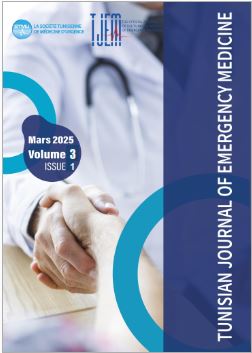The challenge in diagnosing human rabies: A case report
- Authors
-
-
Randa dhaoui
-
Khaoula bel Haj Ali
-
Adel Sekma
-
Sarra Sassi
-
Wahid Bouida
-
semir nouira
-
- Keywords:
- Encephalitis, Rabies, Diagnosis, Challenge
- Abstract
-
Abstract
IntroductionRabies is a zoonotic disease caused by a neurotropic virus of the Lyssavirus genus. Human rabies can manifest in either encephalitic (furious) or paralytic (dumb) forms. The diagnosis is still challenging and often delayed. Viral infection must be considered and treated soon after viral transmission; failure to diagnose and intervene will usually result in disease progression and death.
Case presentationWe report a case of a 61-year-old female, with no past medical history, who visited the Emergency Department (ED) initially for sleep disorders, restlessness, anxiety, refusal of food and watery disgust. The investigations were normal, and the patient was discharged with symptomatic treatment. Her condition worsened after 24 hours, and she presented a cardiac arrest. After resuscitation and return of spontaneous circulation, her physical exam was without abnormalities. Laboratory exams and imaging investigations were normal. The diagnosis was a severe septic shock, treated with empirical antibiotics. A multiple organ failure syndrome has rapidly appeared, and the outcome was fatal.
Upon re-interviewing the family, it turned out that the patient was raising around 20 cats and that she was a victim of an accidental bite by one of her cats 3 weeks before admission. No medical advice was sought, and the family reported a completely healed wound. The patient did not receive any vaccination or serotherapy. Rabies serology came back positive. The diagnosis was confirmed after brain biopsy.
ConclusionHuman rabies is a challenging disease, with a complex neuropathogenic mechanism. The infection can be treated after recognized exposures. However, medical management, once the clinical disease develops, has almost universally proved to be unsuccessful, resulting in fatal outcomes.
- Downloads
- Published
- 31-03-2025
- Section
- Case Reports
- License
-
Copyright (c) 2025 Tunisian Journal of Emergency Medicine

This work is licensed under a Creative Commons Attribution-NonCommercial-ShareAlike 4.0 International License.


